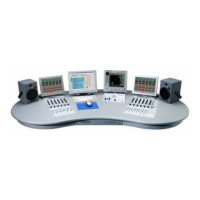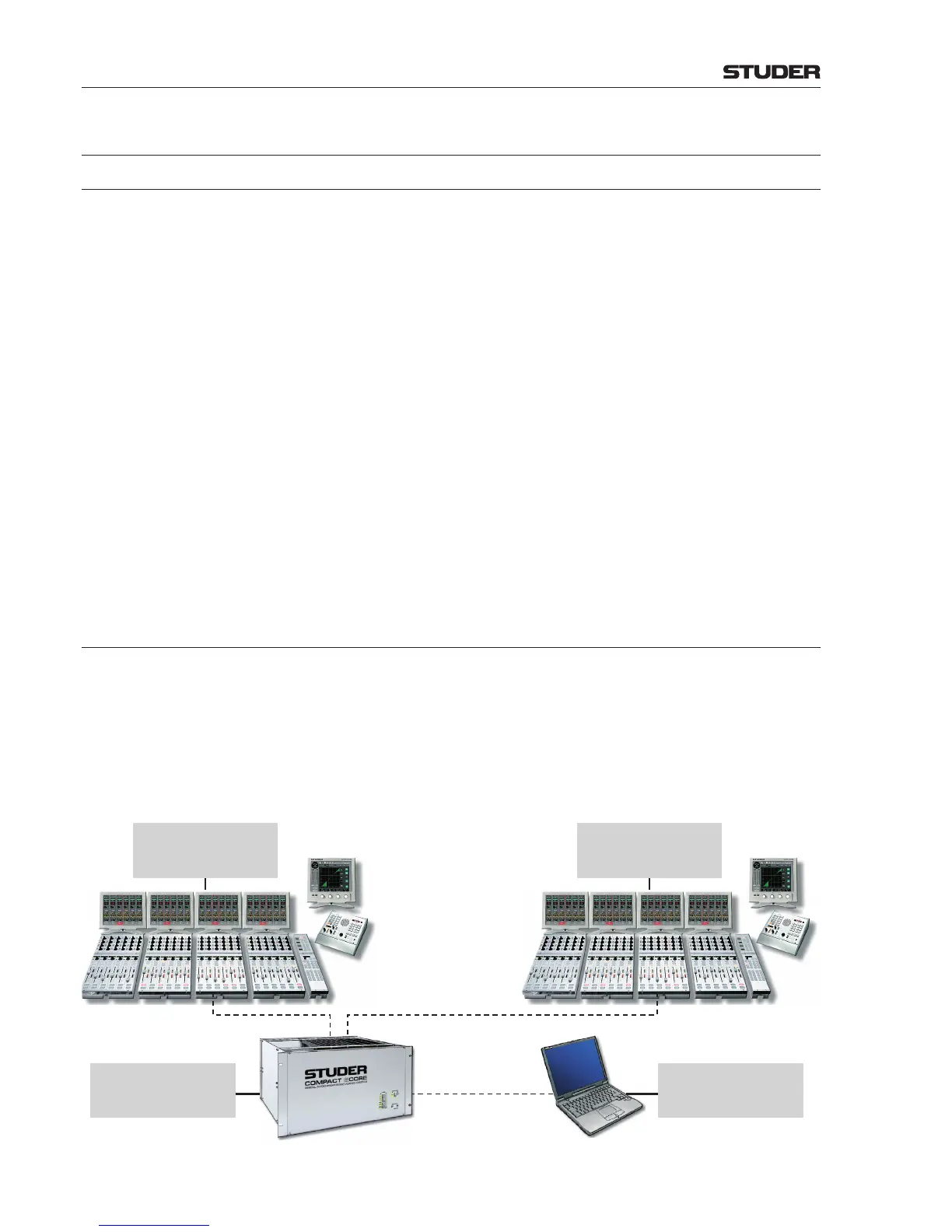OnAir 3000 Digital Mixing Console
5-122 Operation
Document generated: 10.10.14
SW V6.0
5.10 User Access and Management
5.10.1 Purpose
OnAir 3000 consoles are used in different studios with different working
practice and different personnel structures. A large part of users in broadcast
studios is not technically oriented. They request from a mixing console that
it is simple to use, reliable, and free of ‘unnecessary’ controls and displays.
Setting of a wider range of console parameters, saving of console settings
(snapshots) and modifications of the console configuration have to be left
for technically more competent users (e.g. studio technicians, chief engineer,
etc.). It may also be necessary to protect parts of system data, and to give the
permission to change them only to a restricted number of users. In order to
satisfy these needs, the OnAir 3000 console supports individual user acces
rights. By assigning appropriate access rights to each user it is possible to
individually adapt the OnAir 3000 console to very different environments.
The access rights for a specific user are defined on two different levels;
‘privileges’ are defined for access to GUI pages and to groups of console
parameters. Individual access to single console parameters will be available
in a later software version.
A set of privileges forms a ‘policy’. One or more policies can be assigned to
every user, which means that the access rights for a certain user are the result
of a logical OR combination of all policies assigned to him. If no policy is
assigned to a particular user, he has no access to any of the console settings.
5.10.2 General
Once a user is logged in via the user GUI, his login information is saved in
the user GUI memory. In addition, after a successful log-in of a user, a corre-
sponding entry is made in the log file. The access rights for the user currently
logged in are saved. After start-up of the console, the default user is logged
in per default.
This concept allows different users being logged in to the system at the same
time, as illustrated below. The example we are looking at consists of four
sub-systems:
CORE
ID: 10
Current User ID: Default
REMOTE CONFIG GUI
ID: 20
Current User ID: Admin
DESK B
ID: 150
Current User ID: DJ
DESK A
ID: 100
Current User ID: Operator

